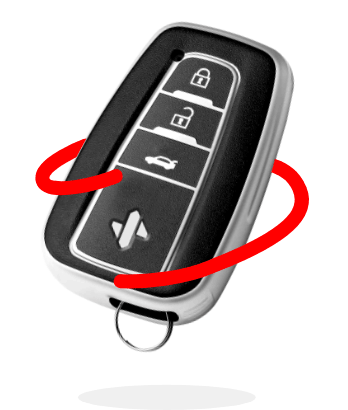Have you heard of gap insurance? Whether you're a new car owner or a seasoned driver, it's essential to understand the intricacies of gap insurance coverage.
While gap insurance can be a valuable asset in certain situations, it's equally crucial to know when it may not pay. In this post, we'll delve into the ins and outs of gap insurance, explore its benefits, and discuss instances where it may not provide the coverage you expect.
What is Gap Insurance?
Gap insurance, also known as Guaranteed Asset Protection insurance, is an optional type of auto insurance that covers the difference between the actual cash value of a vehicle and the amount owed on a car loan or lease in the event of a total loss.
In other words, if your car is deemed a total loss due to an accident or theft, gap insurance helps bridge the gap between what you owe on the vehicle and its depreciated value.
THE BENEFITS OF GAP INSURANCE
Gap insurance offers several key benefits that can provide peace of mind and financial protection in the event of a total loss or theft of your vehicle.
Financial Protection: Firstly, it protects against substantial financial loss by covering the difference between the actual cash value of your vehicle and the amount you owe on your car loan or lease.
If your car is totaled or stolen, you won't have a hefty loan balance to pay off out of pocket. This aspect of gap insurance is precious for individuals who may be at risk of owing more on their vehicle than its market value.
Peace of Mind: Secondly, gap insurance offers peace of mind, especially for those with high-interest car loans or lease agreements. The thought of being responsible for a large sum of money in the event of a total loss can be daunting.
However, with gap insurance, you can rest easy knowing that even if the worst happens, you won't be burdened with the financial repercussions. This added sense of security can help alleviate stress and allow you to focus on other aspects of your life without worrying about potential financial setbacks.
INSTANCES WHERE GAP INSURANCE DOES NOT PAY
While gap insurance can be incredibly beneficial, there are specific scenarios in which it may not provide coverage. Let's take a closer look at these instances:
Total Loss Due to Intentional Damage
Gap insurance doesn’t cover intentional damage to a vehicle. If you purposely cause damage to your car — whether it's a collision or vandalism — gap insurance will not come into play. It's important to note that insurance fraud is illegal and can result in serious legal consequences.
Failure to Maintain the Vehicle
Regular vehicle maintenance is essential, not only for the smooth functioning of your car but also for insurance coverage. If you neglect routine maintenance — such as oil changes, tire rotations, or engine checks — and it leads to a mechanical failure resulting in a total loss, gap insurance may not pay out.
Insurance providers expect drivers to take reasonable care of their vehicles and may deny claims if negligence is proven.
Inadequate Coverage Limits
Gap insurance works in conjunction with primary auto insurance coverage. If your primary auto insurance policy doesn’t have sufficient coverage limits, it could impact the effectiveness of your gap insurance.
It's crucial to assess your primary auto insurance policy to ensure comprehensive protection, including adequate liability coverage and collision coverage limits.
Excluded Vehicles or Circumstances
Certain vehicles or circumstances may be excluded from gap insurance coverage. For instance, motorcycles, recreational vehicles, commercial vehicles, and leased vehicles might not qualify for gap insurance.
Additionally, if you modify your vehicle extensively or use it for commercial purposes, your gap insurance policy may not cover any resulting losses.
IS GAP INSURANCE WORTH IT: FACTORS TO CONSIDER
Loan-to-Value Ratio: One crucial factor to consider is the loan-to-value ratio. Gap insurance becomes more beneficial if you owe more on your vehicle than its current value.
However, if your loan balance is close to or lower than the market value of your car, gap insurance may not be necessary.
Finance Agreement Terms: The terms of your finance agreement can also impact the need for gap insurance. If you have a longer-term loan or lease agreement, the chances of owing more than the vehicle's value increase. In such cases, gap insurance can be a wise investment.
Vehicle Depreciation Rate: The rate at which your vehicle depreciates is another important consideration. Some vehicles depreciate more quickly than others. If you have a car known for rapid depreciation, gap insurance can provide added protection.
Existing Insurance Coverage: Before purchasing gap insurance, review your existing auto insurance policy. Some policies may already provide coverage for the gap between the vehicle's value and the loan amount. Understanding your current coverage will help determine if additional gap insurance is needed.
4 STEPS TO ENSURE GAP INSURANCE COVERAGE
To ensure you have the coverage you need from gap insurance, consider taking the following steps:
- 1. Read and Understand the Policy Terms: Familiarize yourself with the terms and conditions of your gap insurance policy. Pay close attention to any exclusions or limitations to avoid surprises in the event of a claim.
- 2. Adequate Primary Auto Insurance Coverage: Review your primary auto insurance policy limits to ensure they are sufficient to cover potential losses. Consult with your insurance provider to determine if any adjustments or additions are necessary.
- 3. Regular Vehicle Maintenance: Stay on top of your vehicle's maintenance schedule, including routine inspections, oil changes, and repairs. Demonstrating your commitment to maintaining your car can help avoid potential disputes with your insurance provider.
- 4. Consult with Your Insurance Provider: If you have any doubts or questions regarding your gap insurance coverage, don't hesitate to contact your insurance provider. They can provide clarification and guide you through the specifics of your policy.
Gap insurance offers protection against financial loss in the event of a total loss of your vehicle. However, it's essential to understand the limitations and circumstances where gap insurance may not pay. By familiarizing yourself with these instances, reading your policy terms, maintaining your vehicle correctly, and ensuring adequate primary auto insurance coverage, you can be better prepared for any potential claims. Remember, knowing about your insurance coverage is key to making informed decisions and protecting your financial well-being.
If you need help finding the best car insurance coverage for the best price, start by speaking to a SimplyIOA agent at 833.872.4467 or get an auto insurance quote online now.










